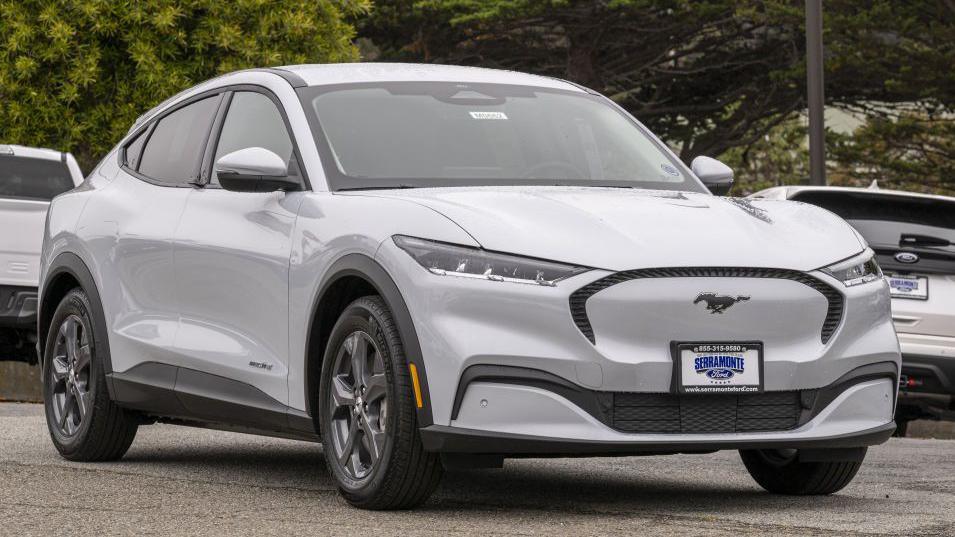US probes Ford hands-free driving tech after crashes

- Published
A US road safety agency is investigating Ford's BlueCruise driver assistance system following two fatal collisions.
The National Highway Traffic Safety Administration (NHTSA) wrote, external in both cases Ford Mustang Mach-E cars collided with stationary vehicles at night, while the system was engaged.
BlueCruise is a driver assistance technology that allows hands-free driving on certain roads, typically motorways.
Ford told the BBC that it was working with NHTSA "to support its investigation".
In February, a Ford Mustang Mach-E using BlueCruise hit the rear of a stationary Honda, killing the 56-year-old driver of the stopped car, Reuters reported.
The other crash involving a Ford Mach-E occurred in March in Philadelphia.
BlueCruise checks whether drivers are paying attention using eye-tracking cameras, and prompts them to take control back over the vehicle if it identifies any drift in focus.
The NHTSA says its preliminary probe will focus on the driver monitoring aspect of the system, as well as how well it generally performs driving tasks.
The two crashes that prompted the new probe are being investigated separately by another safety body, the National Transportation Safety Board (NTSB).
'Reduce error'
The driver assistance technology has also been approved for use on some UK motorways, though there are differences in the way it is implemented and the regulations governing its use, experts say.
Currently it is the only permitted driver assistance technology to allow hands to be taken off the wheel in the UK, the system will only operate on specified sections of road and up to a maximum of 81mph (130kmh).
The "hands off, eyes on" feature launched in the UK last April after receiving government approval.
Its launch was welcomed by transport minister Jesse Norman who said that driver assistance systems "make driving smoother and easier, but they can also help make roads safer by reducing scope for driver error”.
The Department for Transport declined to comment on the new US investigation, but said the approval for Ford’s BlueCruise system for use in the UK was issued following a rigorous examination and assessment process.
The NHTSA's latest look at driver assistance systems and their performance, following crashes, comes after it announced an investigation into the effectiveness of Tesla's fix for safety issues identified in its driver assistance system, Autopilot.
Like BlueCruise, Autopilot is an example of Level 2 autonomous driving software - involving partial automation where two or more aspects of driving are controlled by technology, such as speed regulation and parking.
Autopilot requires drivers to be alert and have their hands on the wheel.
Tesla issued a recall in the form of an "over the air" software update to more than two million of its electric vehicles in December.
BlueCruise experience
Zoe Kleinman, the BBC's technology editor, tried out the hands-free technology in January on one of the UK’s busiest motorways, the M25 which she found "simultaneously relaxing and stressful not being in control of a vehicle travelling at 70 mph in the morning traffic but also knowing you didn’t have to be".
She found the minute she stopped watching the road BlueCruise deactivated, leaving her back in sole charge.
While the BlueCruise-activated car stayed in lane and kept pace with traffic, Zoe said it also took some actions she said she would not have - undertaking in the left hand lane and appearing to speed up on slip-roads when exiting the motorway, resulting in her deciding to touch the brakes.
"Overall, it felt like the start of a new tech with a long way to go before it’s truly useful," she said, "that’s if drivers ever feel safe enough to hand over control".